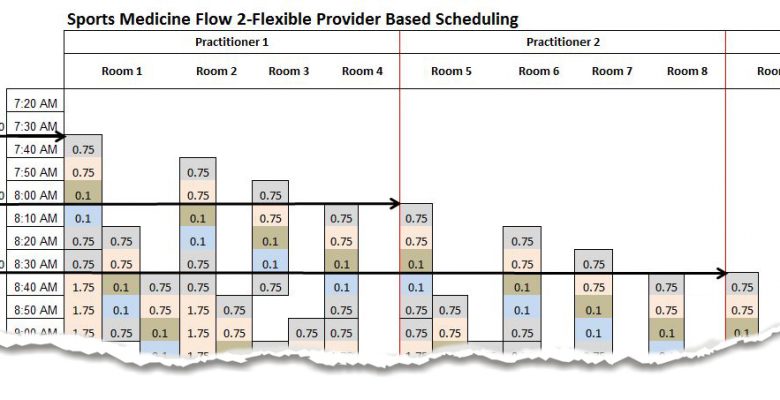This article outlines the use of process modeling at Perkins+Will to determine the appropriate size of waiting spaces and number of seats for outpatient clinics in a medical office building in the Southeast. Opening in 2013, the building represents an addition of more than 200,000 square feet to the campus. Inputs to the process model included provider schedules, length of time for each process during a patient’s visit, and probabilities of the number of people accompanying each patient to a visit. These inputs were programmed into a simulation model that computed the number of seats needed in the waiting space throughout the day. Then, the provider schedules were modified to stagger each provider’s start time. This modification resulted in a significant reduction in the number of waiting seats required. The model concluded that the number of waiting seats in the design was adequate; however, the seats were not allocated to the correct spaces. For example, the clinics on the third floor had more seats than necessary while the clinics on the fourth floor had fewer seats than necessary. The model was useful in determining the appropriate number of seats in each waiting area. Process modeling is also useful in:
• Validation of space programming numbers
• Simulating processes to optimize schedules
• Simulating processes to determine number of providers needed
• Simulating processes to calculate the amount of space needed1.
Future evaluation will be made to assess the number of seating calculated was adequate.
This article originally appeared in Vol 04.02 of the Perkins+Will Research Journal. CLICK HERE to see the whole article.

